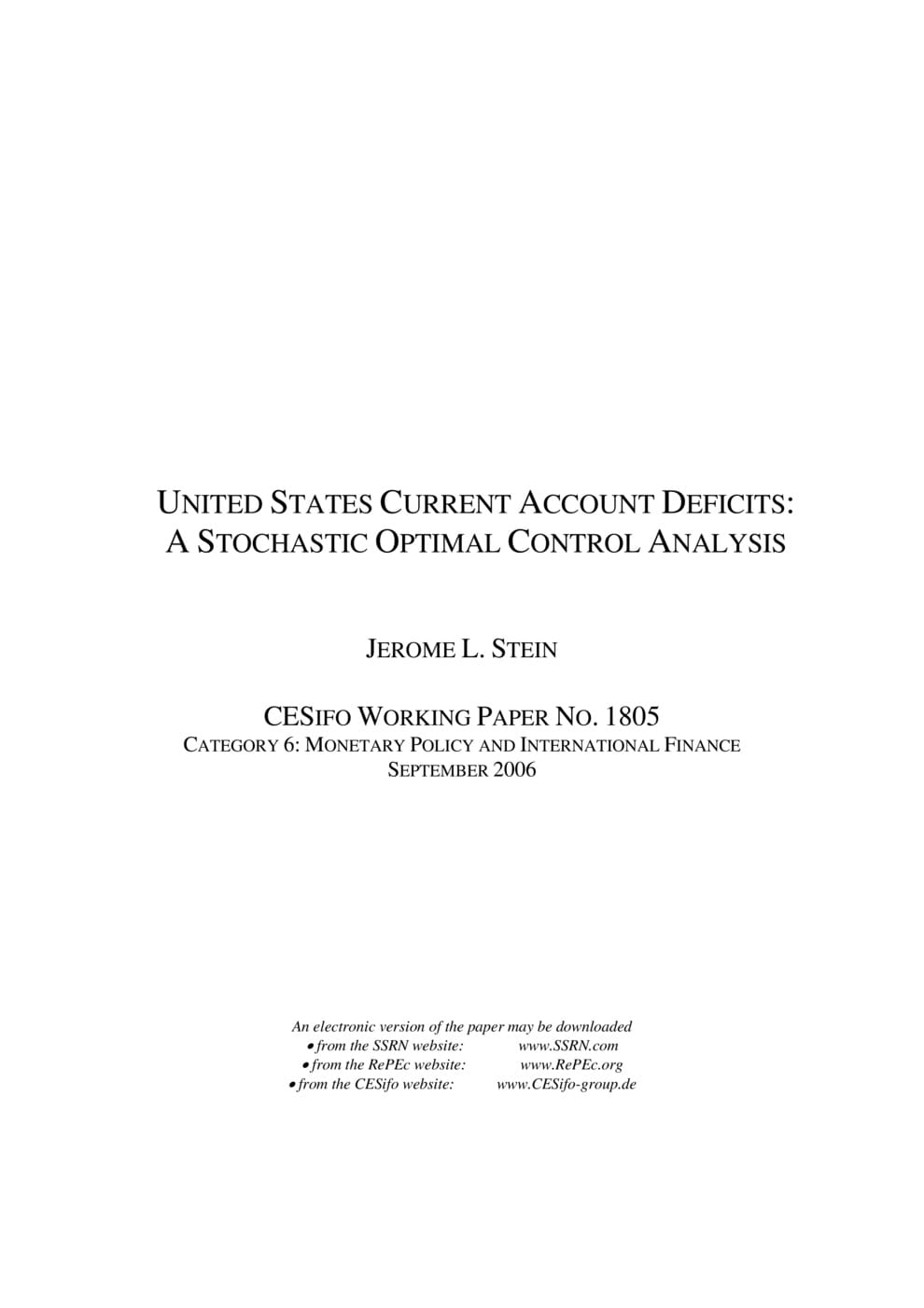United States Current Account Deficits: A Stochastic Optimal Control Analysis
CESifo, Munich, 2006
CESifo Working Paper No. 1805

The "Pessimists" and the "Optimists" disagree whether the US external deficits and the associated buildup of US net foreign liabilities are problems that require urgent attention. A warning signal should be that the debt ratio deviates significantly from the optimal ratio. The optimal debt ratio or debt burden should take into account the vulnerability of consumption to shocks from the productivity of capital, the interest rate and exchange rate. The optimal debt ratio is derived from inter-temporal optimization using Dynamic Programming, because the shocks are unpredictable, and it is essential to have a feedback control mechanism. The optimal ratio depends upon the risk adjusted net return and risk aversion both at home and abroad. On the basis of alternative estimates, we conclude that the Pessimists' fears are justified on the basis of trends. The trend of the actual debt ratio is higher than that of the optimal ratio. The Optimists are correct that the current debt ratio is not a menace, because the current level of the debt ratio is not above the corresponding level of the optimum ratio.